This article on road positioning is taken from Cycle Commuter #13. Read the issue in full online here. It’s well worth a read.
Never hug the kerb. That’s rule one of road positioning on a bicycle. You need to be further out into the road, sometimes right in the middle of the traffic stream. Less assertive cyclists worry that being further out may put them in the way of the traffic. It won’t: you are the traffic. Being in the traffic stream helps you to get treated like traffic.
Reducing risk
It can feel safer to ride in or near the gutter. It isn’t safer. It vastly increases the chances of drivers buzzing past you with inches to spare.You’ll have to contend with drains, cambered surfaces, and debris like broken glass that has been ‘swept’ to the edge of the road by the action of car tyres. And you’re less likely to be seen at all by drivers.
The commonest type of car-cyclist collision is the ‘Sorry, mate, I didn’t see you’ variety. You must register in a driver’s field of vision. You’ll do that best by cycling where they are looking. Drivers look where their vehicle will be in the next few seconds, which is to say: ahead of them. They pay much less attention to people and objects in their peripheral vision.
Initially, you may feel more exposed riding further out from the kerb. But it’s very rare for cyclists to get rear-ended by drivers.
Being safe is being seen – and forcing drivers to react to your presence.
Controlling your space
Drivers are obliged by the Highway Code (Rule 139) to give you ‘at least as much room as a car’ when overtaking. Let that sink in: at least as much room as a car. That means that they should pull out, cross the central, dashed white line, and pull in again.
By riding further out from the edge of the road, you force following traffic to overtake you properly instead of squeezing past dangerously close. Are you inconveniencing anyone? Only those drivers who would not have overtaken you safely in the first place.
As a rule of thumb, your distance from the kerb is the same distance that drivers will give you when overtaking.
How far from the kerb?
You never want to be closer than 50cm from the kerb. Often you’ll be a metre out, sometimes more. The key factor is not so much the edge of the road as the location of the traffic stream on that road; that is, where cars are actually driving in that traffic lane.
There are essentially two cycling positions to choose from, relative to the traffic stream. One is the centre of the traffic stream – that is, the centre of the lane, rather than the centre of the road. You’ll sometimes hear this called ‘the primary position’, but it’s easier to think of it as ‘taking the lane’.
The other position is about a metre to the left of the traffic stream, so long as that doesn’t bring you too close to the kerb. Sometimes called ‘the secondary position’, you can think of it simply as ‘not taking the lane’.
When to take the lane
If you can keep up with the traffic, such as around town, it’s safest to take the lane. It’s also the position to adopt when you want to dissuade drivers from doing something stupid, like cutting you up. Here’s a nonexhaustive list of situations when it’s best to take the lane.
– Approaching a pinch point, such as pedestrian island in the centre of the road.
– Approaching and negotiating a roundabout.
– Approaching Give Way markings.
– Approaching a side road, to prevent drivers from ‘left-hooking’ you and to help drivers on the side road to see you.
– Approaching traffic lights.
– Approaching a blind corner.
– Negotiating a junction.
– In queues of stationary traffic.
– Overtaking parked cars.
When not to take the lane
If you’re not confident in taking the lane, especially when simply riding along, don’t feel that you have to. If the road is busy and the traffic is moving faster than you can, either because it’s a fast road or a steep hill, you’re often better not taking the lane. This is a courtesy to drivers, enabling them to overtake you more easily.
Your safety is paramount, so you should not feel pressured not to take the lane. If a driver pips his horn at you, relax in the knowledge that he has seen you.
Changing positions
Unless you’re taking evasive action, any change in position should be gradual – particularly when moving out to take the lane. Check back to see where any following traffic is, then gradually move into your new position. If you check back early enough, you may not need to signal to change your position within a traffic lane. Signal when you need to communicate your intention to drivers who are closer.
Don’t assume that you can move left to the secondary position without checking behind you. Around town, another cyclist or a moped rider may be about to ‘undertake’ you.
Specific to cyclists
Cyclists are allowed to ride two abreast, although most drivers are not aware of this. On fast or busy roads, it is courteous to single out to make it easier for drivers to pass. Cyclists are allowed to stop on double-yellow lines. Again, drivers may be unaware of this. Finally, don’t tailgate motor vehicles. It reduces your visibility – in both senses – and bicycles can’t stop as fast as cars, so you risk rear-ending a car if it stops suddenly.


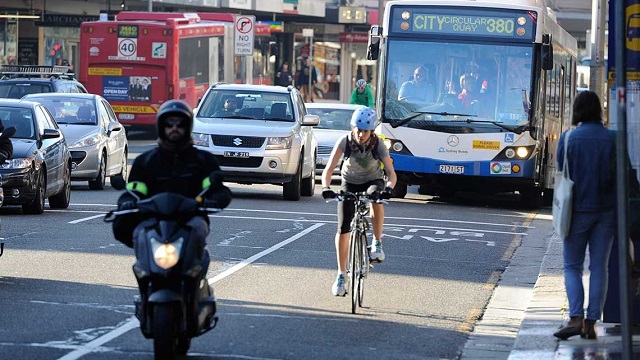



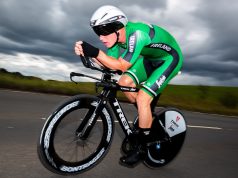
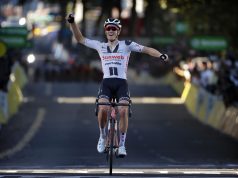
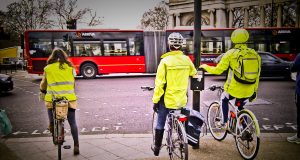
[…] needs, so go ahead and check the rest of it out. All the back issues are also available. Thanks to The Bike Comes First for bringing this to my […]